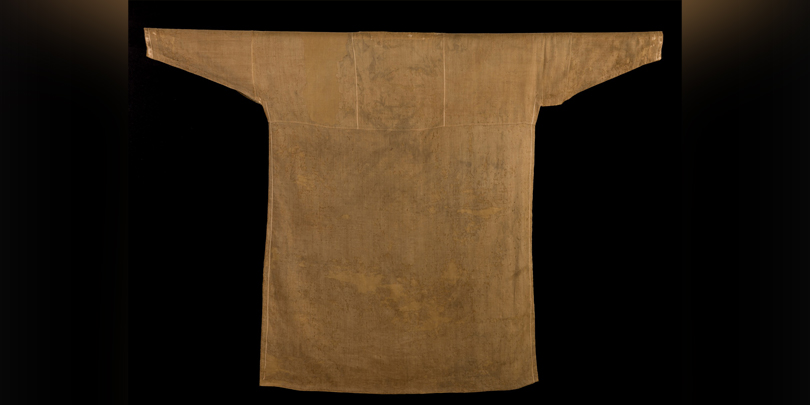
Once shrouded in history and legend, the so-called tunics of St Peter and St John the Evangelist have been subjected to a full restoration and carbon-dating analysis by experts at the Vatican Museums. Source: Sight Magazine.
They will be displayed in a new and permanent exhibition that aims to shed light on the mysteries of these treasures of Catholicism.
The work on the garments, sponsored by the Vatican Patrons of the Arts, found that the tunic said by Church tradition to belong to St Peter dates to a period between the sixth and seventh centuries CE, while that allegedly belonging to St John the Evangelist, a type of religious robe known as a dalmatic, was dated to sometime in the first or second centuries. Both saints lived in the first century after the birth of Christ.
The head of the Vatican Museums, Barbara Jatta, said at a press conference on Thursday that while the tunics may not have belonged to St Peter or St John, they still carry “devotional significance” for believers and that further studies will attempt to bring clarity to the provenance and long history of the artefacts.
The tunics, especially the one said to have belonged to St Peter, were in a terrible state of disrepair.
“The fibres would dissolve with a simple touch,” said Emanuela Pignataro, who worked on the restoration effort. The relics also had signs of “smearing” with dark spots signalling a rapid decomposition process.
For centuries, the tunics were kept in a cypress case inside the Sancta Sanctorum, or Holy of Holies, a chapel located near the Basilica of St John Lateran in Rome and named after the sacred site in Jerusalem that allegedly once housed the ark of the covenant.
FULL STORY
Church relics: Carbon-dating of ancient tunics of Saints Peter and John separates legend from reality (By Claire Giangrave, RNS via Sight Magazine)
RELATED COVERAGE
Carbon dating reveals true age of purported tunics of St Peter and St John (CNA)






